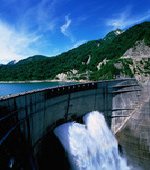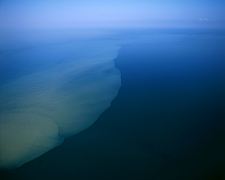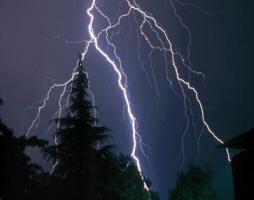- Regional water observation mechanism
- Regional Cooperation Assessment
- Water Quality Monitoring (JP)
- Water scarcity and drought (JP)
- Groundwater (JP)
- Waste water reuse (JP)
- Shared Water Resources Management (JP)
- Linking rural development and water management (JP)
- Waste management
- Water institutions
- Climate Change
- Floods
- Desalination
- Right to Water
- Irrigation
- Satellite data
- Water reports & data
- Hydrology
- Sanitation
- Gender and IWRM
- ArabWAYS
- Non-Revenue Water
- Virtual Water & Water Footprint
- WANA Water Panel
- Water Demand
- Water Governance
- Water Pricing
- Water accounts
- Water nexus Energy
- Geosciences
- Rural Management
 Facts and figures about Evapotranspiration and soil moisture
Facts and figures about Evapotranspiration and soil moisture
| Released | 16/02/2007 |
|---|
- Evapotranspiration is the process of water loss in vapour form from a unit surface of land both directly by evaporation from the ground and by transpiration through leaf surfaces during a specific period of time. Soil moisture is defined as the water stored in or at the continental surface and available for evaporation.
- The processes of evaporation and transpiration (evapotranspiration) are closely linked to the water found in soil moisture; these processes act as driving forces on water transferred in the hydrological cycle.
- Soil moisture storage is dependent on a number of factors in addition to precipitation and evaporation, such as soil type, soil depth, vegetation cover and slope.
- Movement through soil and vegetation is large and accounts for 62% of annual globally renewable freshwater.
- In 1974, Korzun postulated that the active soil water occurs mainly in the top two metres of the soil – within the rooting depth of most vegetation. On this basis he estimated the globe’s total volume of soil moisture to be approximately 16,500 km3. This figure assumes that soil moisture is 10% of the two-metre layer, and that the area of soil containing moisture covers 55% of the land area or 82 million km2.
- Evaporation from surface water bodies such as lakes, rivers, wetlands and reservoirs is also an important component of the hydrological cycle and integral to basin development and regional water management.
- In the case of artificially created reservoirs, it has been estimated that the global volumes evaporating since the end of the 1960s have exceeded the volume consumed to meet both domestic and industrial needs.
- From the standpoint of food production and ecosystem maintenance, soil moisture is the most important parameter to net primary productivity (NPP) and to the structure, composition and density of vegetation patterns. Near-surface soil moisture content strongly influences whether precipitation and irrigation waters either run off to surface water bodies or infiltrate into the soil column.
- It is the water of evapotranspiration that mainly supports forests, rainfed cultivated and grazing land, and a variety of ecosystems. Despite a withdrawal of only 8% of total annual renewable freshwater resources, it has been estimated that 26% of annual evapotranspiration is now appropriated by humans.
Information from the Food and Agriculture Organization of the United Nations’ (FAO) publication ‘Glossary of biotechnology and genetic engineering’ (http://www.fao.org/docrep/003/X3910E/X3910E08.htm#TopOfPage), from the 1st United Nations World Water Development Report: Water for People, Water for Life (http://www.unesco.org/water/wwap/wwdr1/) and from the 2nd United Nations World Water Development Report: 'Water, a shared responsibility' (http://www.unesco.org/water/wwap/wwdr2/table_contents.shtml).
PUBLICATIONS RELATED TO EVAPOTRANSPIRATION AND SOIL MOISTURE
Evaluation of Intergovernmental Panel on Climate Change Fourth Assessment Soil Moisture Simulations for the Second Half of the Twentieth Century
By Haibin Li, Alan Robock, and Martin Wild, 2006
This paper compares soil moisture simulations from the Intergovernmental Panel on Climate Change Fourth Assessment climate models with observed climate for the past century, and evaluates them using in situ soil moisture measurements from over 140 stations or districts in mid-latitudes of the Northern Hemisphere. To account for the observed spatial scale of soil moisture variations, regionally-averaged soil moisture for six regions was used. To explore the summer drying issue for the second half of the 20th century, the linear trend of soil moisture for
:: Access the full paper [PDF format – 3.26 MB] http://climate.envsci.rutgers.edu/pdf/IPCCsmRevision5.pdf
Simulation of soil moisture and evapotranspiration in a soil profile during the 1999 MAP-Riviera Campaign
By M. Zappa and J. Gurtz, 2003
Detailed plot-scale observations of basic hydrometeorological variables represent valuable data for assessing the quality of the soil moisture module and evapotranspiration scheme in hydrological models. This study presents the validation of soil moisture and evapotranspiration simulation during the observing period of the Riviera Project (July–November 1999), a sub-project of the Mesoscale Alpine Programme (MAP). The location investigated was a sandy soil plot at the edge of a corn field. The hydrological model PREVAH was driven using three meteorological data sets: hourly data from an experimental tower in the Riviera Valley (southern Switzerland), hourly data interpolated for the Riviera site during the special observing period from permanent automatic stations (MeteoSwiss network) and interpolated daily data (1980–2000).
:: Access the full paper [PDF format – 3.32 MB] http://www.hydrol-earth-syst-sci.net/7/903/2003/hess-7-903-2003.pdf
LINKS ABOUT EVAPOTRANSPIRATION AND SOIL MOISTURE
Global Soil Moisture Data Bank
http://climate.envsci.rutgers.edu/soil_moisture/
The Global Soil Moisture Data Bank of the Department of Environmental Sciences of the Rutgers State University of New Jersey (
The water cycle: Evapotranspiration
http://ga.water.usgs.gov/edu/watercycleevapotranspiration.html
This webpage, part of the United States Geological Survey (USGS) website on the water cycle, explain what evapotranspiration is, plant leaves’ transpiration, how much water plants transpire, the atmospheric factors affecting transpiration, and the relation between transpiration and groundwater.
 you are not logged in
you are not logged in





